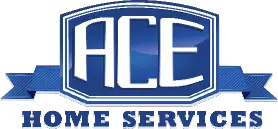This December we are all about heat. Last time we discussed furnace repairs and later we will look at hot water heaters (if you’re having troubles with that come back next week!). Last time we mentioned ways to keep your furnace working (and working well) for a long time to come, one of those was by getting annual inspections and heating tune-ups. So, without further ado, here’s what a heating tune-up can do for you!
Heating Tune-Ups, Just Good Maintenance
Like any other ‘tune-up,’ this is a necessary bit of maintenance to insure everything is operating optimally. Things degrade with wear and tear over time and if they are allowed to just degrade you’ll be using your furnace until it fails completely. By taking routine care of your heating appliances their operational lifespan is increased drastically!
Here at ACE Home Services, we pride ourselves on our thorough heating tune-up process. We want to catch any faults or failures as fast as possible. Here are the 21 different points we include in our comprehensive approach.
- Check Thermostat Operation
First thing first, we have to check the thermostat. It’s the primary piece we interact within our homes, if this is off it might cause all sorts of further problems down the line that aren’t even necessarily there!
- Check Unit Operation
After looking at the thermostat we’ll want to look at the unit itself, verifying everything is working properly inside and out.
- Inspect Plenum
The plenum (a space that is filled with hot air directly by the furnace) is inspected for faulty parts, including pan gaskets. Anything that would prevent the plenum from filling correctly.
- Inspect Ducts
No tune-up would be complete without inspecting ducts for debris, obstructions, dirt, or pet dander. Clean ducts make for good HVAC systems.
- Look for Duct Leaks
Any leak in the ductwork will hurt the efficiency of your heating system. Looking at the ductwork in an annual tune-up will make sure any fault in the system is found as soon as possible.
- Check Condensation Drain
Just like your sinks or tubs, the condensation drain in your heating unit could clog. We make sure that’s not happening, and any excess moisture is leaving the unit.
- Check Condensation Drain Pan
The next stop for that condensation after the drain is the pan. Checking the pan ensure pooling doesn’t occur and mess anything up.
- Check Indoor Blower Motor
The blower motor is another crucial piece in the ventilation system. If the ducts look great, there are no leaks, and still air isn’t getting circulated that points to the motor. We inspect it to see that it is running correctly.
- Check Blower Motor Run Capacitor
While looking at the blower motor, we also inspect the capacitor to know whether or not the piece is holding the right charge and running correctly.
- Inspect Blower Wheel
Another piece of the blower motor assembly that needs inspection is the blower wheel itself. Does the capacitor power it well, are the belts in working order.
- Measure Air Flow
If the blower should be working and the ductwork is correct, measuring the airflow is easy. If the velocity is off, we know there’s something amiss.
- Test Safeties
HVAC systems have many safety components and features built-in. Making sure these are working properly can prevent a catastrophic failure or breakdown from taking place.
- Check Electrical Wiring
Faulty wiring might not be the first thing you think to check for when you’re having troubles with your heater but it’s a smart (and necessary!) step to look at. There may be known problems with your heating unit, or whoever installed it previously might have been a bit… lax in their approach to proper wiring.
- Check Compressor Contractor
Another piece of the electronic components of HVAC systems, the compressor contractor are simply put heavy-duty switches that allows the unit to use the higher amperage of power required.
- Check Relays
Speaking of switches, the relay switch is another point we inspect that it is operating optimally.
- Test Capacitors
Testing the capacitors and motors attached to them to make sure the capacitors are functioning as they should.
- Check Starting Components
The system starting sequence has a number of components that work together to get the system online. We verify that they are working in the order they should.
- Check Refrigerant Pressures
While we’re taking a look for your heater tune-up, we’ll also make sure the refrigerant is working right. This means looking at the suction line and verifying that it has the right amount of pressure.
- Check Condenser Motor Operation
Condenser motors have, as you might imagine, a few parts that need to be inspected. The speed of the motor, the voltage it is operating at, all of these need to be set at the exact right place for the condenser motor to work efficiently.
- Check Insulation Tubes & Panels
The whole idea with HVAC is to manage temperature in your home, so having proper insulation on each part is obviously crucial.
- Calculate and Ensure Operating Efficiency
Perhaps the biggest check of all, ensuring the operating efficiency of the unit. When all the other points of the heating tune-up are covered, it should be on point, if not then we know there is something else afoot in need of repair or replacement.
Phew, ok, that probably seemed like a lot, in honesty it is – that’s why you hire a professional when it comes to tuning up your heater.
Ready to book a 21-point heating tune-up, head over to our tune-up form and get your service quote, or call (602) 428-3341 to schedule your service now! Here at ACE Home Services we have been fortunate to serve the Valley for over 25 years, and we intend to be here for 25 more – and then some! Let us be your heating, plumbing, air conditioning guys.
